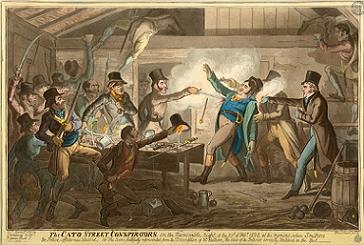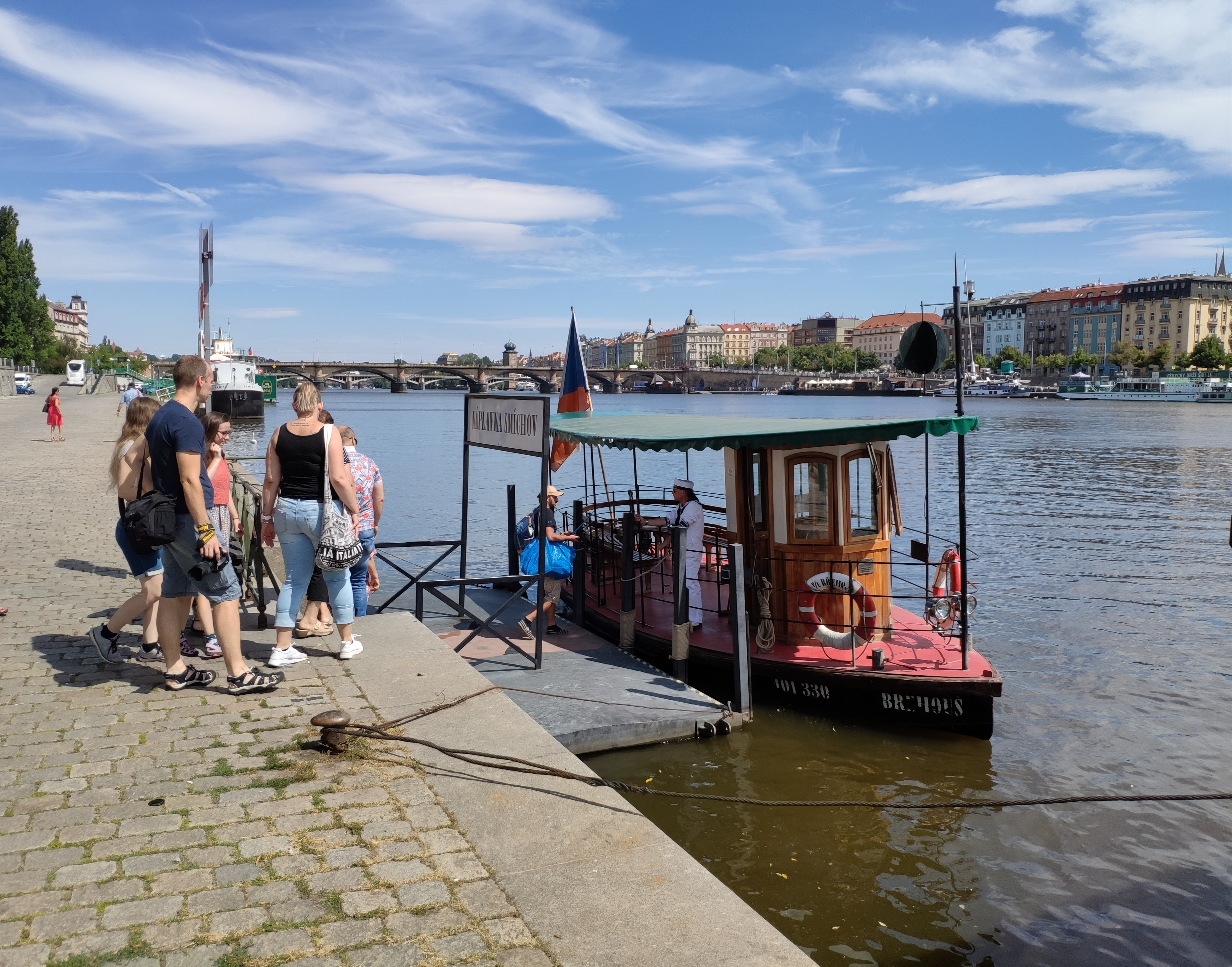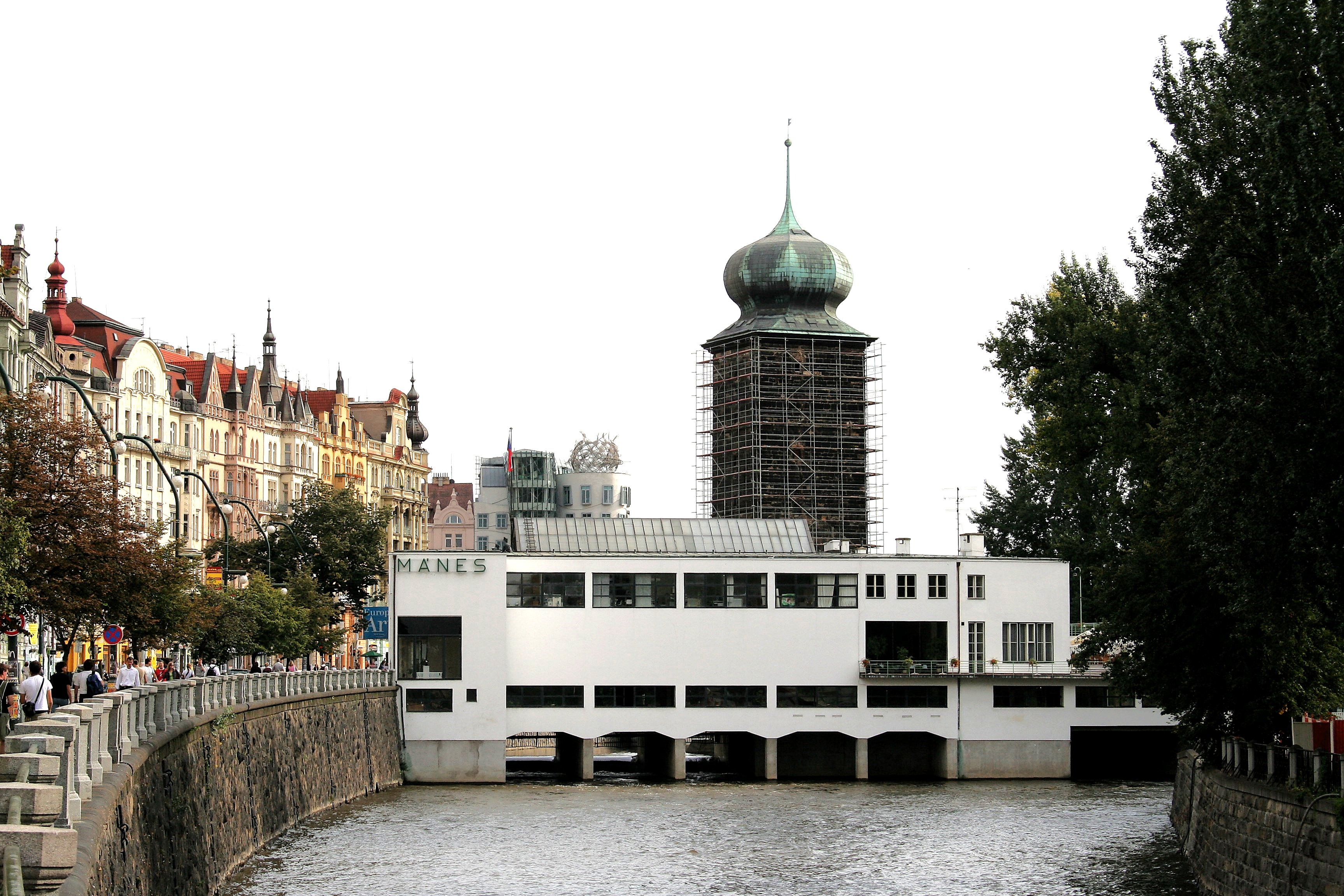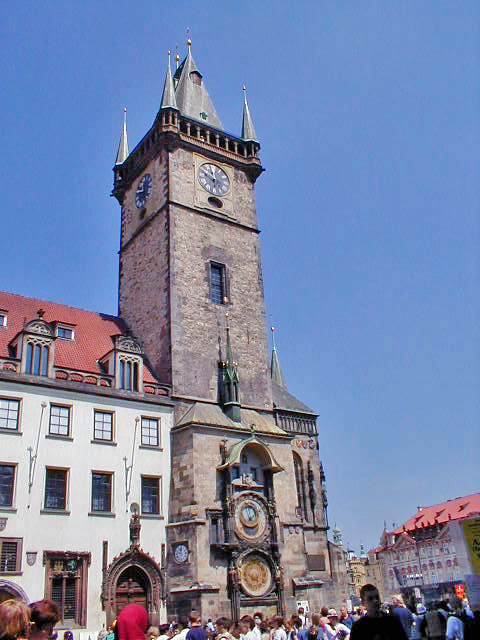|
Josef Mánes
Josef Mánes (12 May 1820, Prague – 9 December 1871, Prague) was a Czech painter. Life He came from a family of painters, which included his father Antonín, his uncle and Director of the Prague Art Academy Václav, his brother Quido and his sister Amalie. His first painting lessons naturally came from his father. From 1835 to 1844, he studied at the Academy of Fine Arts, Prague, under Professors František Tkadlík and Christian Ruben. He continued his studies in Munich for two years. Upon his return, an affair with the family's maid had unpleasant results and created an estrangement with some members of his family that left him in a state of severe depression. He found refuge in the patronage of Count Bedřich Silva-Tarouca , living and working at his castle in Čechy pod Kosířem for twenty years. From there, he made many trips throughout Moravia, Upper Hungary (Slovakia) and Poland. He took an active role in many artistic, literary and patriotic societies. He ... [...More Info...] [...Related Items...] OR: [Wikipedia] [Google] [Baidu] |
Prague
Prague ( ; ) is the capital and List of cities and towns in the Czech Republic, largest city of the Czech Republic and the historical capital of Bohemia. Prague, located on the Vltava River, has a population of about 1.4 million, while its Prague metropolitan area, metropolitan area is home to approximately 2.3 million people. Prague is a historical city with Romanesque architecture, Romanesque, Czech Gothic architecture, Gothic, Czech Renaissance architecture, Renaissance and Czech Baroque architecture, Baroque architecture. It was the capital of the Kingdom of Bohemia and residence of several Holy Roman Emperors, most notably Charles IV, Holy Roman Emperor, Charles IV (r. 1346–1378) and Rudolf II, Holy Roman Emperor, Rudolf II (r. 1575–1611). It was an important city to the Habsburg monarchy and Austria-Hungary. The city played major roles in the Bohemian Reformation, Bohemian and the Protestant Reformations, the Thirty Years' War and in 20th-century history a ... [...More Info...] [...Related Items...] OR: [Wikipedia] [Google] [Baidu] |
Italy
Italy, officially the Italian Republic, is a country in Southern Europe, Southern and Western Europe, Western Europe. It consists of Italian Peninsula, a peninsula that extends into the Mediterranean Sea, with the Alps on its northern land border, as well as List of islands of Italy, nearly 800 islands, notably Sicily and Sardinia. Italy shares land borders with France to the west; Switzerland and Austria to the north; Slovenia to the east; and the two enclaves of Vatican City and San Marino. It is the List of European countries by area, tenth-largest country in Europe by area, covering , and the third-most populous member state of the European Union, with nearly 59 million inhabitants. Italy's capital and List of cities in Italy, largest city is Rome; other major cities include Milan, Naples, Turin, Palermo, Bologna, Florence, Genoa, and Venice. The history of Italy goes back to numerous List of ancient peoples of Italy, Italic peoples—notably including the ancient Romans, ... [...More Info...] [...Related Items...] OR: [Wikipedia] [Google] [Baidu] |
1871 Deaths
Events January–March * January 3 – Franco-Prussian War: Battle of Bapaume – Prussians win a strategic victory. * January 18 – Proclamation of the German Empire: The member states of the North German Confederation and the south German states unite into a single nation state, known as the German Empire. The King of Prussia is declared the first German Emperor as Wilhelm I of Germany, in the Hall of Mirrors at the Palace of Versailles. The Constitution of the German Confederation comes into effect. It abolishes all restrictions on Jewish marriage, choice of occupation, place of residence, and property ownership, but exclusion from government employment and discrimination in social relations remain in effect. * January 21 – Battle of Dijon: Giuseppe Garibaldi's group of French and Italian volunteer troops, in support of the French Third Republic, win a battle against the Prussians. * February 8 – 1871 French legislative election elects the first legislatu ... [...More Info...] [...Related Items...] OR: [Wikipedia] [Google] [Baidu] |
1820 Births
Events January–March *January 1 – A constitutionalist military insurrection at Cádiz leads to the summoning of the Spanish Parliament to meet on March 7, becoming the nominal beginning of the " Trienio Liberal" in Spain. *January 8 – The General Maritime Treaty of 1820 is signed between the sheikhs of Abu Dhabi, Sharjah, Ajman, Umm al-Quwain and Ras Al Khaimah (later constituents of the Trucial States) in the Arabian Peninsula and the United Kingdom. *January 27 ( NS, January 15 OS) – An Imperial Russian Navy expedition, led by Fabian Gottlieb von Bellingshausen in '' Vostok'' with Mikhail Petrovich Lazarev, sights the Antarctic ice sheet. *January 29 – George IV of the United Kingdom becomes the new British monarch upon the death his father King George III after 59 years on the throne. The elder George's death ends the 9-year period known as the British Regency. *January 30 – British Royal Navy captain Edward Bransfield, an Irishman, becomes ... [...More Info...] [...Related Items...] OR: [Wikipedia] [Google] [Baidu] |
University Of Michigan Library
The University of Michigan Library is the academic library system of the University of Michigan. The university's 38 constituent and affiliated libraries together make it the second largest research library by number of volumes in the United States. As of 2019–20, the University Library contained more than 14,543,814 volumes, while all campus library systems combined held more than 16,025,996 volumes. As of the 2019–2020 fiscal year, the Library also held 221,979 serials, and over 4,239,355 annual visits. Founded in 1838, the University Library is the university's main library and is housed in 12 buildings with more than 20 libraries, among the most significant of which are the Shapiro Undergraduate Library, Hatcher Graduate Library, Special Collections Library, and Taubman Health Sciences Library.Libraries & Archives , University of Michiga ... [...More Info...] [...Related Items...] OR: [Wikipedia] [Google] [Baidu] |
Miloš Jiránek
Miloš Jiránek (19 November 1875 — 2 November 1911) was a Czech Neo-Impressionist painter, art critic and writer. Biography Jiránek was born on 19 November 1875 in Lužec nad Vltavou. His father was a landowner and his mother came from a wealthy peasant family. While attending primary school in Prague, he lived with Jaroslav Vrchlický, where he had access to a huge library.Brief biography, criticism and exhibition notes @ the National Gallery, Prague. He mastered foreign languages easily and read many books in the original. In 1894, he studied at the |
Czechoslovakia
Czechoslovakia ( ; Czech language, Czech and , ''Česko-Slovensko'') was a landlocked country in Central Europe, created in 1918, when it declared its independence from Austria-Hungary. In 1938, after the Munich Agreement, the Sudetenland became part of Nazi Germany, while the country lost further territories to First Vienna Award, Hungary and Trans-Olza, Poland (the territories of southern Slovakia with a predominantly Hungarian population to Hungary and Zaolzie with a predominantly Polish population to Poland). Between 1939 and 1945, the state ceased to exist, as Slovak state, Slovakia proclaimed its independence and Carpathian Ruthenia became part of Kingdom of Hungary (1920–1946), Hungary, while the German Protectorate of Bohemia and Moravia was proclaimed in the remainder of the Czech Lands. In 1939, after the outbreak of World War II, former Czechoslovak President Edvard Beneš formed Czechoslovak government-in-exile, a government-in-exile and sought recognition from the ... [...More Info...] [...Related Items...] OR: [Wikipedia] [Google] [Baidu] |
Old Town (Prague)
The Old Town of Prague (, ) is a medieval settlement of Prague, Czech Republic. It was separated from the outside by a semi-circular moat and wall, connected to the Vltava river at both of its ends. The moat is now covered up by the streets (from north to south-west) Revoluční, Na Příkopě, and Národní (Prague), Národní—which remain the official boundary of the cadastral community of Old Town. It is now part of Prague 1. Notable places in the Old Town include Old Town Square and Prague astronomical clock, Astronomical Clock. The Old Town is surrounded by the New Town of Prague. Across the river Vltava connected by the Charles Bridge is the Lesser Town of Prague (). The former Jewish Town (Josefov) is located in the northwest corner of Old Town heading towards the Vltava. History From its early existence, around the 9th century, Staré Město was laid out of settlements which appeared from the spacious marketplace on the bank of Vltava. Records dating back to 1100 A ... [...More Info...] [...Related Items...] OR: [Wikipedia] [Google] [Baidu] |
Vltava River
The Vltava ( , ; ) is the longest river in the Czech Republic, a left tributary of the Elbe River. It runs southeast along the Bohemian Forest and then north across Bohemia, through Český Krumlov, České Budějovice, and Prague. It is commonly referred to as the "Czech national river". Etymology Both the Czech name ' and the German name ' are believed to originate from the old Germanic words ' 'wild water' (compare Latin '). In the ' (872 AD) it is called '; from 1113 AD it is attested as '. In the ' (1125 AD) it is attested for the first time in its Bohemian form, '. Course The Vltava originates by a confluence of two rivers, the Teplá Vltava, which is longer, and the Studená Vltava, originating in Bavaria. From a water management point of view, the Vltava and Teplá Vltava are one river with single numbering of river kilometres. The Teplá Vltava originates in the territory of Kvilda in the Bohemian Forest at an elevation of , on the slope of the Černá hora ... [...More Info...] [...Related Items...] OR: [Wikipedia] [Google] [Baidu] |
Mánes Union Of Fine Arts
The Mánes Association of Fine Artists ( or ''S.V.U.''; commonly abbreviated as ''Manes'') was an artists' association and exhibition society founded in 1887 in Prague and named after painter Josef Mánes. The Manes was significant for its international exhibitions before and after World War I that encouraged interaction between Czech artists and the foreign avant-garde. It played an important role in the development of Czech Cubism and Rondocubism. Between 1928 and 1930, Manes built a complex with a restaurant, club, showroom and offices at the site of the Štítkovský Mill and water tower on the Vltava. The architect of the 1928 Manes pavilion was member . The union was liquidated under the Communists and was revived after the Velvet Revolution in 1990. Its headquarters became the Diamond House in Prague, itself a landmark of cubist architecture. Formative years (1885–1899) ''Svaz výtvarných umělců Mánes'' ("Association of Fine Artists Mánes") was established in ... [...More Info...] [...Related Items...] OR: [Wikipedia] [Google] [Baidu] |
Prague Astronomical Clock
The Prague astronomical clock or Prague Orloj ( ) is a medieval astronomical clock attached to the Old Town Hall in Prague, the capital of the Czech Republic. Description The Orloj is mounted on the southern wall of Old Town Hall in the Old Town Square. The clock mechanism has three main components – the astronomical dial, representing the position of the Sun and Moon in the sky and displaying various astronomical details; statues of various Catholic saints stand on either side of the clock; "The Walk of the Apostles", an hourly show of moving Apostle figures and other sculptures, notably a figure of a skeleton that represents Death, striking the time; and a calendar dial with medallions representing the months. According to local legend, the city will suffer if the clock is neglected and its good operation is placed in jeopardy; a ghost, mounted on the clock, was supposed to nod its head in confirmation. According to the legend, the only hope was represented by a bo ... [...More Info...] [...Related Items...] OR: [Wikipedia] [Google] [Baidu] |
Ethnographic
Ethnography is a branch of anthropology and the systematic study of individual cultures. It explores cultural phenomena from the point of view of the subject of the study. Ethnography is also a type of social research that involves examining the behavior of the participants in a given social situation and understanding the group members' own interpretation of such behavior. As a form of inquiry, ethnography relies heavily on participant observation, where the researcher participates in the setting or with the people being studied, at least in some marginal role, and seeking to document, in detail, patterns of social interaction and the perspectives of participants, and to understand these in their local contexts. It had its origin in social and cultural anthropology in the early twentieth century, but has, since then, spread to other social science disciplines, notably sociology. Ethnographers mainly use qualitative methods, though they may also include quantitative data. T ... [...More Info...] [...Related Items...] OR: [Wikipedia] [Google] [Baidu] |








